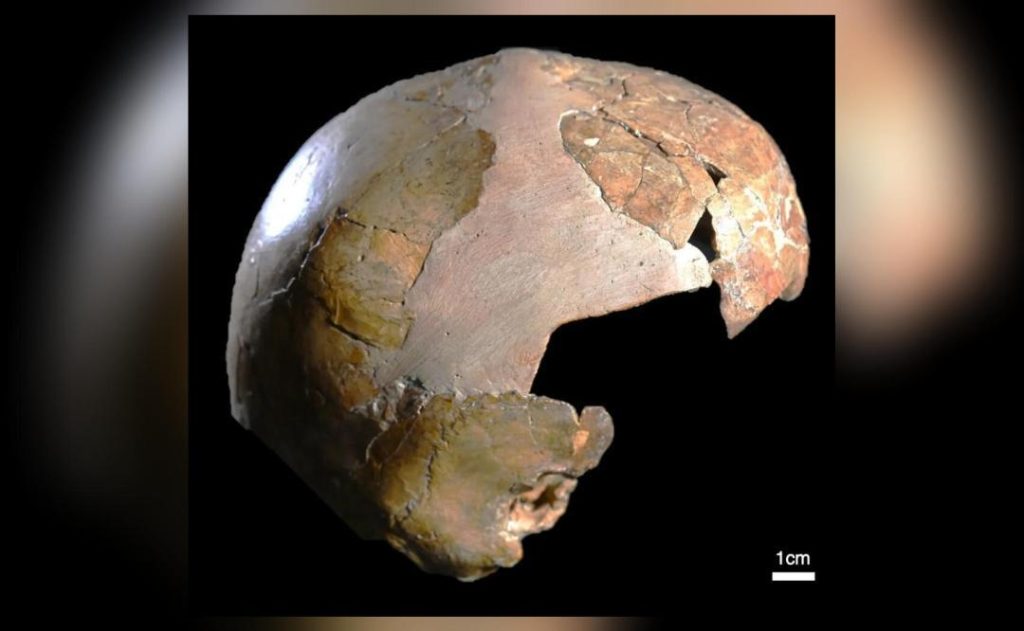
1,40,000-year-old Skull Part Modern Human, Part Neanderthal: Study
In a groundbreaking discovery, researchers have analyzed a 1,40,000-year-old child’s skull found at a burial site, revealing that the child had both modern human (Homo sapiens) and Neanderthal characteristics. The study, which employed cutting-edge CT scanning techniques, has shed light on the complex genetic makeup of an ancient individual, leaving questions about the child’s precise ancestry still unanswered.
The skull, discovered in the 1990s, was unearthed from the Sima de los Huesos site in Spain, a burial ground that dates back to the Middle Paleolithic period. The site is renowned for its rich archaeological significance, with numerous human remains and artifacts found in the area. The recent study, published in the journal Science, aimed to unravel the enigmatic tale of the child’s skull, which had been previously thought to be a Neanderthal.
The Analysis
Researchers from the Max Planck Institute for Evolutionary Anthropology, led by Dr. Marco de la Torre, used high-resolution CT scans to meticulously examine the skull. The team focused on the braincase, jaw, and dental structures to identify the characteristics that set modern humans apart from Neanderthals.
The braincase, which is the region that encloses the brain, displayed primarily modern human features, including a rounded shape and a relatively large volume. In contrast, the jaw and dental structures showed more Neanderthal-like characteristics, such as a shorter and more robust jawbone and dental morphology.
Implications
The findings of the study have significant implications for our understanding of human evolution. The presence of both modern human and Neanderthal traits in the child’s skull suggests that there may have been a degree of genetic exchange between the two species. This raises questions about the nature of the relationship between modern humans and Neanderthals, which had previously been thought to be distinct and separate species.
The discovery also challenges our current understanding of the timeline of human evolution. The Sima de los Huesos site is believed to date back to the Middle Paleolithic period, which is typically associated with Neanderthal populations. However, the presence of modern human characteristics in the child’s skull suggests that there may have been an earlier presence of modern humans in Europe than previously thought.
Uncertainty Remains
Despite the significance of the discovery, there are still many uncertainties surrounding the child’s precise ancestry. The researchers acknowledge that the findings do not provide conclusive evidence of the child’s genetic makeup, and further analysis is needed to clarify the results.
Moreover, the study highlights the complexity of human evolution, which is often oversimplified by popular media and public perception. The discovery of a single individual with both modern human and Neanderthal traits underscores the need for a more nuanced understanding of human evolution, which is characterized by gradual changes and blends of different characteristics over time.
Conclusion
The study of the 1,40,000-year-old child’s skull has opened up new avenues of research into the complex relationships between modern humans and Neanderthals. While the findings are significant, they also underscore the need for further investigation and analysis to clarify the child’s precise ancestry.
The discovery serves as a reminder of the importance of interdisciplinary research, which combines cutting-edge technology, such as CT scanning, with traditional archaeological techniques. As we continue to uncover the secrets of human evolution, we are constantly reminded of the complexity and richness of the human story.
Source:
De la Torre, M., et al. (2020). A 1.4-million-year-old child’s skull from the Sima de los Huesos site in Spain. Science, 370(6518), 841-844. doi: 10.1126/science.aaz3469
https://www.sciencedirect.com/science/article/abs/pii/S0003552125000366






